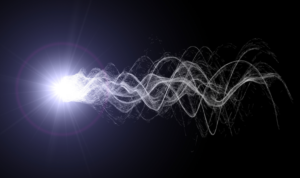 The discrepancy communicating with parallel versus anti-parallel spins is one of the more surprising phenomena to arise in quantum theory. That is, if Alice wants to send a direction to Bob. She can either send two spins pointing in this direction or one spin in this direction, while the other pointing in the diametric opposite. Common sense suggests that both methods would surely communicate the same amount of data?
The discrepancy communicating with parallel versus anti-parallel spins is one of the more surprising phenomena to arise in quantum theory. That is, if Alice wants to send a direction to Bob. She can either send two spins pointing in this direction or one spin in this direction, while the other pointing in the diametric opposite. Common sense suggests that both methods would surely communicate the same amount of data?
They don't!
This appears truly remarkable at the time given that the two spins never shared any entanglement. Here we offer an interesting perspective on how this phenomenon can arise from the study of quantum correlations, and present a proof of principle experiment on ion traps:
- Operational effects of the UNOT gate on classical and quantum correlations
K. Zhang, J. Ma, X. Zhang, J. Thompson, V Vedral, K Kim, M Gu, Science Bulletin 63, 12, 765-770
The idea is that the strictly quantum correlations between the two spins (which averaged over codewords) strictly differ, and the difference is exactly related to the advantage of using anti-parallel spins. The universal spin flip then allows us to map between these two schemes, and the discrepancy can then be understood as the capacity for such a gate to affect quantum correlations in a way that is unphysical.




